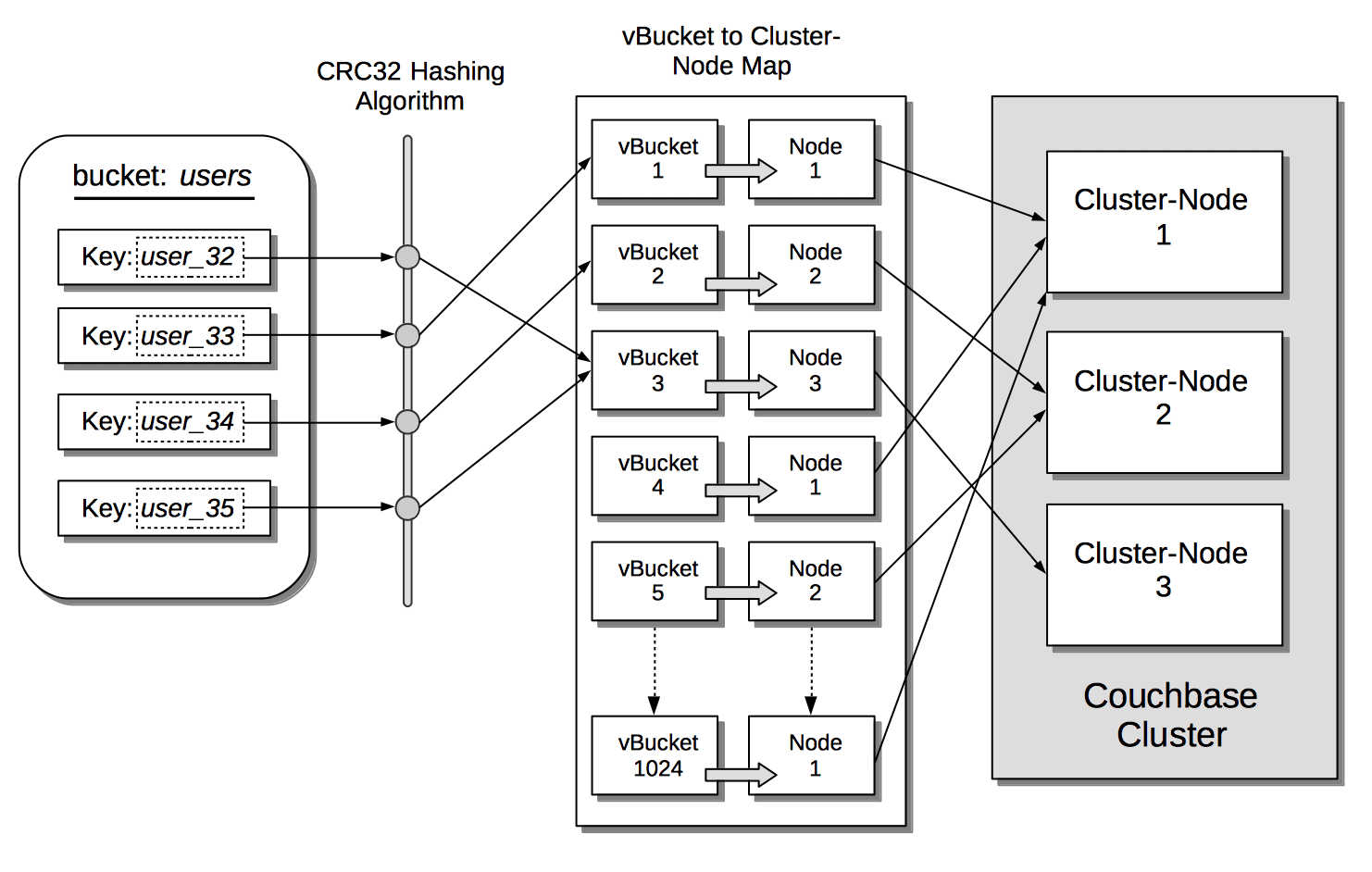Load balancing definition
Load balancing is like having a team of workers at a busy restaurant. Imagine the restaurant is a website, and the customers are the users trying to access it. Just like a host assigns customers to different seating sections to ensure no single waitperson is overwhelmed, load balancing distributes the user requests across multiple servers or resources to ensure smooth and efficient processing. This way, no single server gets too swamped with requests or sits idle while others are working hard.
This page covers:
- How does load balancing work?
- Load balancing algorithms
- Types of load balancers
- Benefits of load balancing
- Disadvantages of load balancing
- Conclusion
How does load balancing work?
Load balancing is a process that distributes incoming network traffic evenly across a group of backend servers or resources. Balancing ensures that no single server bears too much load and decreases the risk of poor performance or outages. When a request comes in from a user, the load balancer decides which server in its pool to direct the request to. This process might involve evaluating which server is currently under the least strain.
The criteria for the decision can include the current number of connections, the server’s response time, or its overall capacity. By evenly distributing the requests, load balancing helps maintain the speed and reliability of the network and ensures that each user request is processed efficiently. This approach is crucial for handling large volumes of web traffic and maintaining high availability and performance for web services. Implementing various load balancing algorithms optimizes the distribution process and enhances the stability of the network.
Load balancing algorithms
Load balancing algorithms are the rules or methods that efficiently distribute network traffic across multiple servers. These algorithms can be broadly categorized into two types, static and dynamic. Each type has its unique approaches suited to different network environments.
Static algorithms distribute traffic without considering the current state of the servers, and they often use predetermined rules.
Dynamic algorithms are more responsive and consider each server’s real-time load and performance to make better-informed decisions about traffic distribution.
Static load balancing algorithms
Static load balancing algorithms distribute network traffic evenly across servers using predetermined methods without considering the current state or performance of the servers. These algorithms are known for their simplicity and ease of implementation. Some common examples include:
- Round-robin: Distributes requests sequentially across all servers, ensuring an equal distribution over time. For example, you can use round-robin to distribute the load of a query over duplicate indexes.
- Random: Assigns incoming requests to any available server at random.
- Hashing: Uses a hash function to ensure that similar data consistently maps to the same node in a server cluster. For example, Couchbase Server uses vBuckets (shards) and the CRC32 hashing algorithm to distribute data effectively across a cluster without requiring a separate load balancing service.
These static methods provide a straightforward, easy-to-configure approach to load balancing and are particularly effective in environments where servers have similar capabilities, the workload is consistently stable, and performance is a high priority. However, static load balancing is not the best choice for all use cases.
Couchbase uses CRC32 for load balancing data storage
Dynamic load balancing algorithms
Dynamic load balancing algorithms are more sophisticated methods that distribute network traffic across servers by considering the current state and performance. These algorithms dynamically adjust to changing network conditions, server loads, and traffic patterns, making them ideal for environments with fluctuating workloads or diverse server capabilities. Key types of dynamic load balancing algorithms include:
- Least connections: Favors less busy servers by directing new requests to the server with the fewest active connections
- Least response time: Optimizes for speed by choosing the server with the shortest response time for recent requests
- Resource-based load balancing: Distributes requests to servers with the most available resources by considering their overall capacity or specific resources (like CPU and memory)
- Weighted load balancing: Assigns weight to servers based on capacity or performance metrics and sends more requests to higher-capacity servers
Dynamic algorithms help ensure that no single server becomes a bottleneck, and they’re particularly useful in environments where server performance varies significantly or traffic spikes are common. The adaptability of dynamic load balancing makes it a preferred choice for many high-traffic, high-variability scenarios where maintaining performance and avoiding overloading servers is crucial.
Static and dynamic load balancing pros and cons
Static load balancing is simple to implement and offers predictability in traffic distribution, but it lacks the flexibility to adjust to sudden changes in server load or network traffic.
Dynamic load balancing is adaptable and responsive, but it can be complex to configure and may introduce additional processing overhead.
Couchbase’s CRC32 method is static, but Couchbase also offers multi-dimensional scaling (MDS), which allows you to scale individual database services separately. MDS provides more flexibility for managing traffic, including workload isolation and as much separation of query, data, indexing, search, analytics, and eventing services as you need.
Couchbase’s multi-dimensional scaling provides a simplified configuration for balancing load on a per-service basis
Couchbase Server and Couchbase Capella™ DBaaS don’t need an additional load balancer, but Couchbase’s Sync Gateway for mobile application data can benefit from a load balancer like NGINX for horizontal scaling. One benefit of using the cloud-managed version of Sync Gateway, Capella App Services, is that the load balancing is built in and doesn’t require additional deployment and configuration. This built-in balancing gives you one less service to manage, upgrade, and patch.
Types of load balancers
Each type of load balancer has unique advantages, and you should choose yours based on factors like network environment, performance requirements, scalability needs, and budget considerations. The main types of load balancers include:
- Hardware-based load balancers: These are physical devices designed for robust performance in high-traffic scenarios. They offer reliability, but at a higher cost and with physical deployment limitations.
- Software-based load balancers: These run on virtual machines or in cloud environments. They offer greater flexibility and easier scalability and are better suited for dynamic or changing workloads.
- Cloud-based load balancers: Provided by cloud service platforms, these integrate well with cloud services. They offer easy deployment and scalability without needing on-premises hardware.
- Application load balancers: Specialized for web applications, these operate at the application layer. They offer advanced traffic distribution based on content like URLs or headers.
Benefits of load balancing
Load balancing offers numerous benefits crucial for maintaining efficient, reliable, and robust network operations. These include:
Availability: Load balancing enhances server availability by preventing individual servers from becoming overwhelmed and ensuring that no single point of failure disrupts the entire system. It also reduces response times and improves overall system performance.
Scalability: Load balancing makes it easier to scale resources up or down in response to varying traffic loads. It ensures consistent performance during peak times and under changing demands.
Redundancy and failover: If one server fails, load balancing can reroute traffic to other servers to ensure continuous service availability.
Maintenance and upgrades: When servers are taken offline for updates, the load balancer can redirect traffic to other servers without disrupting service.
Together, these benefits make load balancing an indispensable tool in modern network and web service management, ensuring smooth, uninterrupted service for users.
Disadvantages of load balancing
While load balancing brings significant advantages, it also comes with challenges. These include:
Complexity: Implementing and managing a load balancing solution, especially in large and dynamic environments, can be complicated. This complexity often requires specialized knowledge and can increase hardware, software, and labor costs for setup and ongoing maintenance.
Latency: The process of directing traffic through a load balancer can introduce a delay, although this is generally minimal.
Misconfiguration: Misconfigured load balancing can lead to poor traffic distribution or even downtime.
Single point of failure: If the load balancer fails without a proper failover system, this can lead to significant service disruptions.
These disadvantages highlight the importance of careful planning, robust configuration, and ongoing management when you deploy load balancing solutions.
Conclusion
Understanding the nuances of load balancing algorithms, their types, and their impact on network performance is essential for efficient network management. While static algorithms like round-robin and Couchbase’s CRC32 offer simplicity and predictability, dynamic algorithms like least connections and resource-based load balancing provide adaptability in fluctuating environments.
When considering load balancing, it’s essential to weigh the pros and cons of each type of algorithm. Static methods are straightforward but less flexible, whereas dynamic methods are adaptable but more complex. To find the right fit for your network needs, you should also explore various hardware-based, software-based, cloud-based, and application load balancers.
The key to effective load balancing lies in choosing the right strategy and tools to align with your network’s requirements and challenges. For further exploration and detailed insights:
- Dive into Couchbase’s documentation on the CRC32 algorithm and multi-dimensional scaling to understand how to implement static load balancing in specific scenarios
- Review resources on dynamic load balancing techniques for a deeper understanding of handling high-traffic and variable environments
- Evaluate different load balancer products and services like NGINX, AWS Elastic Load Balancing, and Azure Load Balancer to compare their features, scalability options, and integration capabilities with your existing network infrastructure
- Explore additional concepts related to Couchbase


